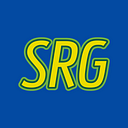Fighting Force
メタルフィスト, Metal Fist
Fighting Force (also known as Metal Fist in the Japanese release) is a 1997 3D beat ’em up video game developed by the now-defunct Core Design and published by Square Enix Europe (Eidos Interactive at the time of the release). It was released for PlayStation, Microsoft Windows, and Nintendo 64 on October 15, 1997 (January 15, 1998 in Japan). Announced shortly after Core became a star developer through the critical and commercial success of Tomb Raider, Fighting Force was highly anticipated but met with mixed reviews. The video game’s composer is Martin Iverson.
Core Design originally pitched the game to Sega as a potential fourth entry in Sega’s Streets of Rage series. Sega declined; according to Core, Sega explained that it had its own plans for continuing the series. Core opted to go ahead with the game as a standalone, multi-platform title, and started work on it. Core Design collaborated with ten coders from EA Japan in making the game. The video game was going to be for the Sega Saturn (you can see the rolling demo on YouTube). The storyline and character designs were done by Marc Silvestri. The character of Dr. Zeng was inspired by Heaven’s Gate.
Players control one of four characters as they move through urban and science fiction environments, battling waves of oncoming enemies with weapons including soda cans, knives, cars, and guns. The player can make some choices as to which territory to travel through.
The four characters have various reasons for taking on Dr. Dex Zeng (spelled as “Doctor Zeng” in the NA/EU manual and official materials and “Zeng” in-game), a criminal mastermind with an army at his command who predicted that the world would end in the year 2000. After New Year’s Eve 1999, Dr. Zeng believed that there was an error preventing the apocalypse, so he decided to correct it by destroying the world himself. The action starts with a police cordon around Zeng’s office skyscraper, moving to such locales as a shopping mall, subway, and Coast Guard base before finally ending at the top of Zeng’s island headquarters.
Players choose from a selection of four characters: Hawk Manson, Ben “Smasher” Jackson, Mace Daniels, and Alana McKendricks (written as “Alana McKendrick” in the NA/EU manual and official materials). Hawk Manson and Mace Daniels are two all-around characters. Hawk is somewhat stronger than Mace who is, in turn, faster than Hawk. Ben “Smasher” Jackson is a large and slow bruiser capable of lifting and throwing the engines of cars at enemies. Alana McKendricks is a fast but soft-hitting teenager with an effective jump-kick. All four characters have a special move that can be performed with the loss of a portion of health.
Differences between the NA/EU and the JP releases
See this YouTube video here.
Fighting Force (North America and Europe)
- The PlayStation version doesn’t use lives (except for the JP release), but the N64 does. The score resets to zero when you use a continue (you start the game with no continues first), and every 100K points gives you a continue.
- The N64 version was published by the now-closed Crave Entertainment and was released in North America and Europe in 1999. Differences include partially improved graphics, different music, and changes in the available number of player lives.
- Most stages end immediately after you go through the exit.
- Most firearms have five rounds for pistol, three rounds for shotgun, four rounds for the rocket launcher, and other weapons throughout the game.
Metal Fist (Japan)
- Mooks have different names, such as “Kuro”, “Shuwa”, “Bash”, etc. as opposed to “Basher”, “Crusher”, “Punk”, etc. in the NA/EU version. The bosses’ names remained in both versions (and the bosses’ health is in yellow-green in this release, as opposed to the orange-yellow NA/EU release).
- Like the NA/EU N64 releases, it uses lives.
- Uses “credits” instead of “continues”.
- Most firearms have eight rounds for pistol, five rounds for shotgun, four rounds for the rocket launcher, and other weapons throughout the game.
- Staff roll has sketches instead of CGI renders in the NA/EU releases.
- This version uses the 1997–2000 EA logo after the Eidos/Core Design combo.
- The final boss’ health is longer than the NA/EU releases.
This is the first game that is either owned or licensed by Square Enix (then known as Squaresoft) to be reviewed on Medium. After Eidos went downhill, Square Enix now owns the rights to Fighting Force, but the sequel (which focuses on Hawk Manson exclusively and rewards a more stealthy approach) was not very successful and received very low ratings from most well-known gaming publications. Due to its lackluster sales and a less-than-pleased fanbase, the series eventually ended. A third game was in development but was canceled when Core Design closed down.
Update 2022/05/12: Core Design’s former headquarters has been sold by a private owner and it became an apartment, though you can still see their former headquarters from 2017 (pictured here). The now-closed video game developer’s official website can only be accessed via the Wayback Machine.

